25.06.2016
Juno right on target for July 4 rendezvous with Jupiter
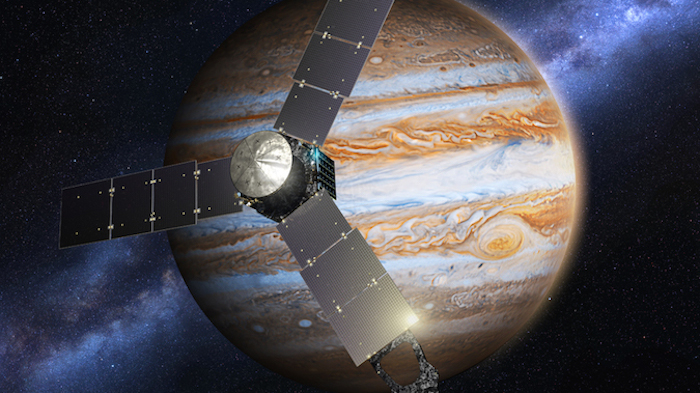
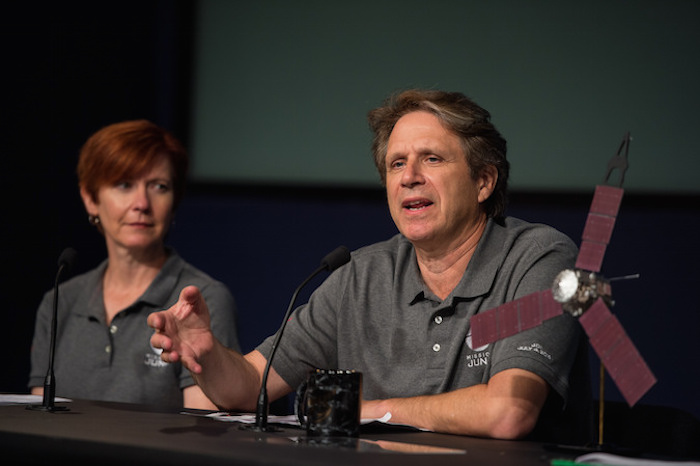
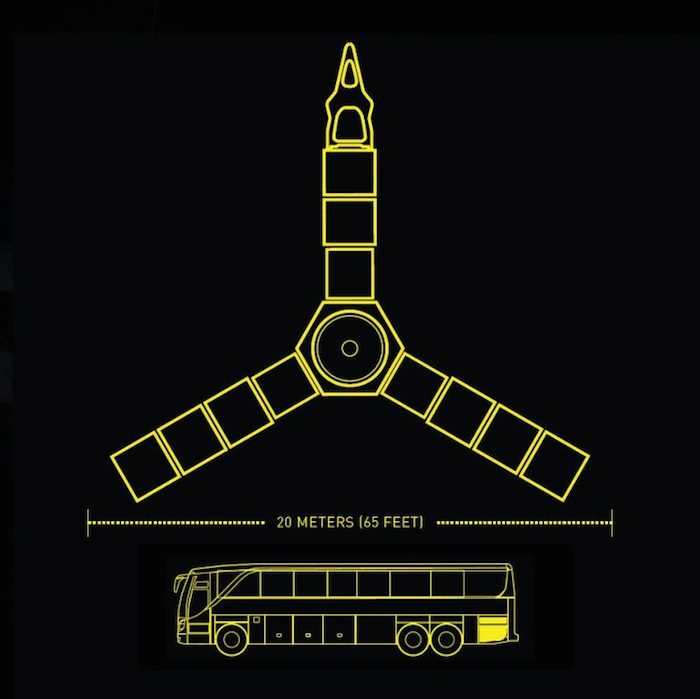
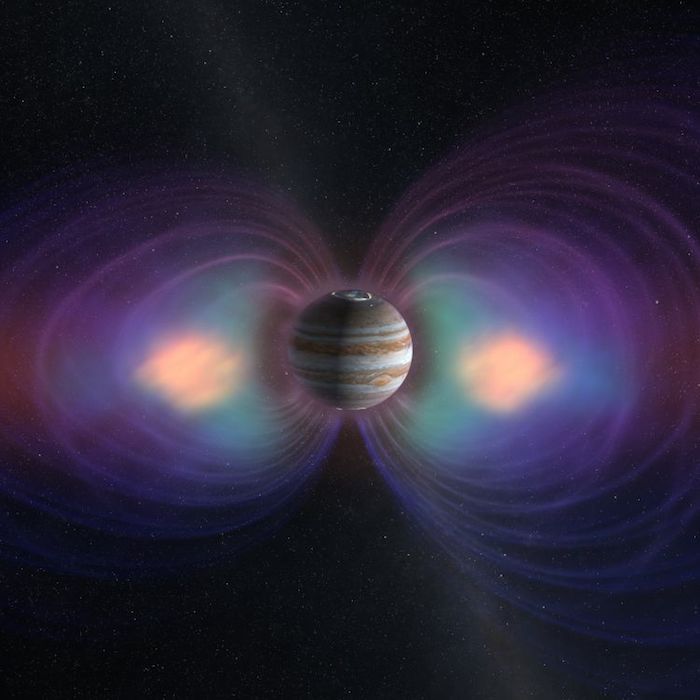
Jupiter erwartet die Ankunft von Juno
Beeindruckende VLT-Bilder von Jupiter nur wenige Tage vor Ankunft der Juno-Raumsonde vorgestellt
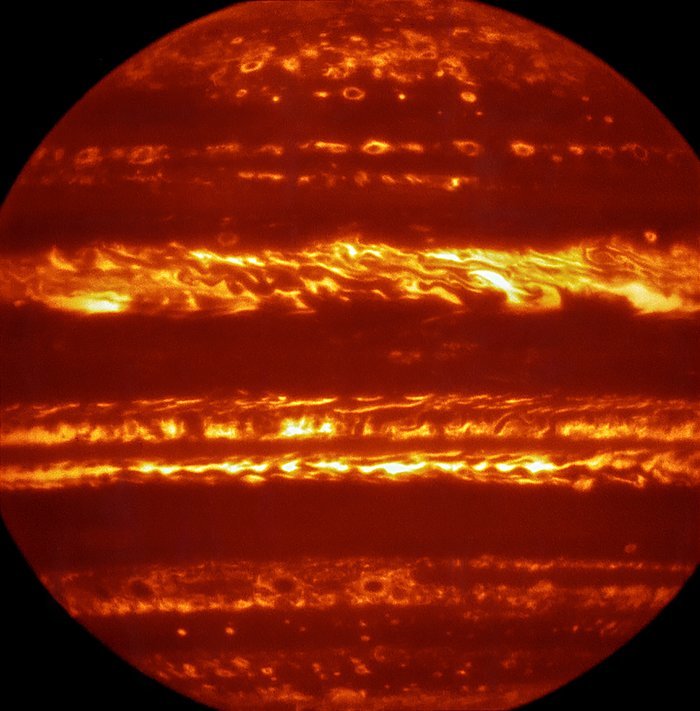
Die zwei Gesichter des Jupiters
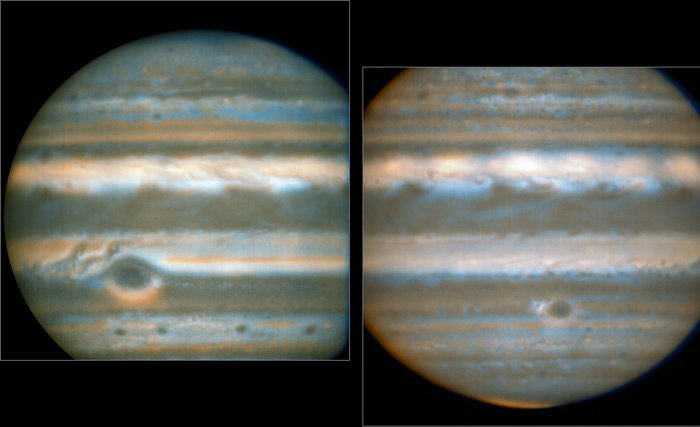

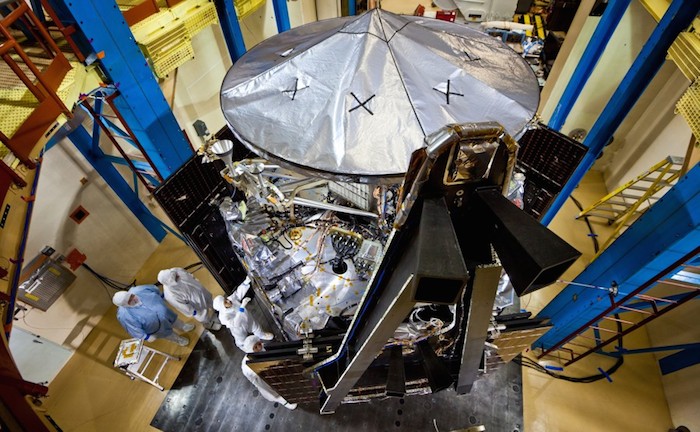
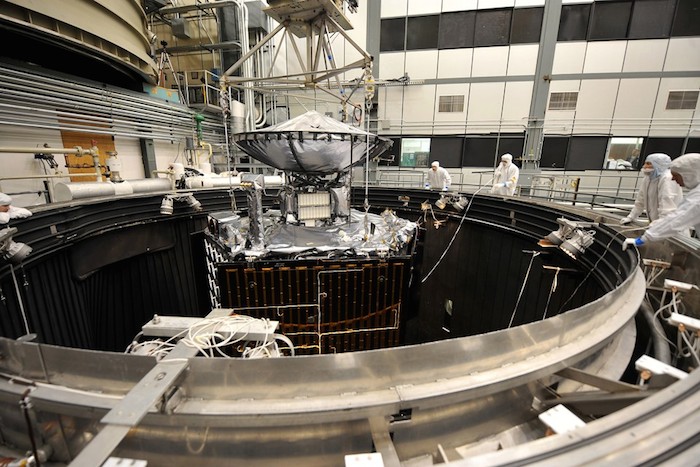
NASA’s Juno Spacecraft Sends First In-orbit View
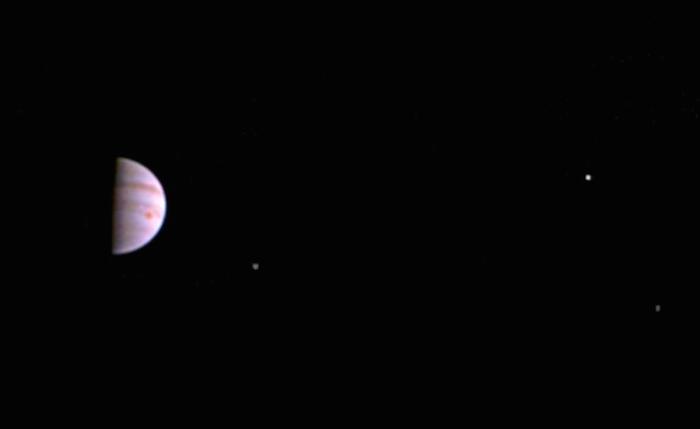
Five years after departing Earth, and a month after slipping into orbit around Jupiter, NASA's Juno spacecraft is nearing a turning point. On July 31 at 12:41 p.m. PDT (3:41 p.m. EDT), Juno will reach the farthest point in its orbit of Jupiter for the first time, known as “apojove,” 5 million miles (8.1 million kilometers) from the giant planet. After that point, Jupiter's gravitational grip on Juno will cause the spacecraft to begin falling back toward the planet for another pass, this time with its scientific eyes wide open.
The spacecraft is currently executing the first of two long orbits prior to beginning its science mission. Each capture orbit is nearly two months long -- quite the wait for the mission's eager team of scientists -- but it's nothing compared to the long wait the team endured on the trek to Jupiter.
Juno launched on Aug. 5, 2011. The spacecraft took a long, looping path around the inner solar system to set up an Earth flyby, in which our planet's gravity flung the spinning probe onward toward Jupiter.
"For five years we've been focused on getting to Jupiter. Now we're there, and we're concentrating on beginning dozens of flybys of Jupiter to get the science we're after," said Scott Bolton, Juno principal investigator at Southwest Research Institute in San Antonio.
Juno arrived at Jupiter on July 4, firing its main rocket engine as planned for 35 minutes. The flawless maneuver allowed Jupiter's gravity to capture the solar powered spacecraft into the first of two 53.4-day-long orbits, referred to as capture orbits. Following the capture orbits, Juno will fire its engine once more to shorten its orbital period to 14 days and begin its science mission.
But before that happens, on Aug. 27, Juno must finish its first lap around Jupiter, with a finish line that represents the mission's closest pass over the gas giant. During the encounter, Juno will skim past Jupiter at a mere 2,600 miles (4,200 kilometers) above the cloud tops.
Juno's science instruments were turned off during orbit insertion, to simplify spacecraft operations during that critical maneuver. In contrast, all the instruments will be collecting data during the Aug. 27 pass, which serves as a trial run before the mission gets to work collecting the precious data it came for.
"We're in an excellent state of health, with the spacecraft and all the instruments fully checked out and ready for our first up-close look at Jupiter," said Rick Nybakken, Juno project manager at NASA's Jet Propulsion Laboratory, Pasadena, California.
With its powerful suite of science instruments, Juno will probe Jupiter's deep structure, atmospheric circulation and the high-energy physics of its magnetic environment. What Juno finds there will reveal important clues to Jupiter's formation and evolution, along with insights about how our planetary system and others are built.
JPL manages the Juno mission for the principal investigator, Scott Bolton, of Southwest Research Institute in San Antonio. Juno is part of NASA's New Frontiers Program, which is managed at NASA's Marshall Space Flight Center in Huntsville, Alabama, for NASA's Science Mission Directorate. Caltech in Pasadena manages JPL for NASA.
Quelle: NASA
-
Update: 12.08.2016
.
MARBLE MOVIE RAW IMAGES
Every year there is a period of time that Jupiter is too close to the sun for earth-based astronomers to observe. This year that time co-incides with Juno’s initial large orbits of Jupiter. Ordinarily we would not take images with JunoCam during this time however in the absence of our amateur ground-based support we are collecting RGB images 4 times per hour. We call this the “marble movie” because Jupiter is so small in the image. We have enough resolution to see if something major happens, like the disappearance of the Great Red Spot, or the fading of the South Equatorial Belt. We are also imaging Jupiter through our methane filter.
.

Quelle: NASA
-
Update: 26.08.2016
.
This Saturday at 5:51 a.m. PDT, (8:51 a.m. EDT, 12:51 UTC) NASA's Juno spacecraft will get closer to the cloud tops of Jupiter than at any other time during its prime mission. At the moment of closest approach, Juno will be about 2,600 miles (4,200 kilometers) above Jupiter's swirling clouds and traveling at 130,000 mph (208,000 kilometers per hour) with respect to the planet. There are 35 more close flybys of Jupiter scheduled during its prime mission (scheduled to end in February of 2018). The Aug. 27 flyby will be the first time Juno will have its entire suite of science instruments activated and looking at the giant planet as the spacecraft zooms past.
"This is the first time we will be close to Jupiter since we entered orbit on July 4," said Scott Bolton, principal investigator of Juno from the Southwest Research Institute in San Antonio. "Back then we turned all our instruments off to focus on the rocket burn to get Juno into orbit around Jupiter. Since then, we have checked Juno from stem to stern and back again. We still have more testing to do, but we are confident that everything is working great, so for this upcoming flyby Juno's eyes and ears, our science instruments, will all be open."
"This is our first opportunity to really take a close-up look at the king of our solar system and begin to figure out how he works," Bolton said.
While the science data from the pass should be downlinked to Earth within days, interpretation and first results are not expected for some time.
"No other spacecraft has ever orbited Jupiter this closely, or over the poles in this fashion," said Steve Levin, Juno project scientist from NASA's Jet Propulsion Laboratory in Pasadena, California. "This is our first opportunity and there are bound to be surprises. We need to take our time to make sure our conclusions are correct."
Not only will Juno's suite of eight science instruments be on, the spacecraft's visible light imager -- JunoCam will also be snapping some closeups. A handful of JunoCam images, including the highest resolution imagery of the Jovian atmosphere and the first glimpse of Jupiter's north and south poles, are expected to be released during the later part of next week.
The Juno spacecraft launched on Aug. 5, 2011, from Cape Canaveral, Florida. JPL manages the Juno mission for the principal investigator, Scott Bolton, of Southwest Research Institute in San Antonio. Juno is part of NASA's New Frontiers Program, which is managed at NASA's Marshall Space Flight Center in Huntsville, Alabama, for NASA's Science Mission Directorate. Lockheed Martin Space Systems, Denver, built the spacecraft. Caltech, in Pasadena, California, manages JPL for NASA.
Quelle: NASA
-
Update: 28.08.2016
.
Speeding Towards Jupiter's Pole

Jupiter's north polar region is coming into view as NASA's Juno spacecraft approaches the giant planet. This view of Jupiter was taken on August 27, when Juno was 437,000 miles (703,000 kilometers) away.
NASA's Jet Propulsion Laboratory, Pasadena, Calif., manages the Juno mission for the principal investigator, Scott Bolton, of Southwest Research Institute in San Antonio. The Juno mission is part of the New Frontiers Program managed at NASA's Marshall Space Flight Center in Huntsville, Ala. Lockheed Martin Space Systems, Denver, built the spacecraft. JPL is a division of the California Institute of Technology in Pasadena.
---
NASA's Juno Successfully Completes Jupiter Flyby
NASA's Juno mission successfully executed its first of 36 orbital flybys of Jupiter today. The time of closest approach with the gas-giant world was 6:44 a.m. PDT (9:44 a.m. EDT, 13:44 UTC) when Juno passed about 2,600 miles (4,200 kilometers) above Jupiter's swirling clouds. At the time, Juno was traveling at 130,000 mph (208,000 kilometers per hour) with respect to the planet. This flyby was the closest Juno will get to Jupiter during its prime mission.
"Early post-flyby telemetry indicates that everything worked as planned and Juno is firing on all cylinders," said Rick Nybakken, Juno project manager at NASA's Jet Propulsion Laboratory in Pasadena, California.
There are 35 more close flybys of Jupiter planned during Juno's mission (scheduled to end in February 2018). The August 27 flyby was the first time Juno had its entire suite of science instruments activated and looking at the giant planet as the spacecraft zoomed past.
"We are getting some intriguing early data returns as we speak," said Scott Bolton, principal investigator of Juno from the Southwest Research Institute in San Antonio. "It will take days for all the science data collected during the flyby to be downlinked and even more to begin to comprehend what Juno and Jupiter are trying to tell us."
While results from the spacecraft's suite of instruments will be released down the road, a handful of images from Juno's visible light imager -- JunoCam -- are expected to be released the next couple of weeks. Those images will include the highest-resolution views of the Jovian atmosphere and the first glimpse of Jupiter's north and south poles.
"We are in an orbit nobody has ever been in before, and these images give us a whole new perspective on this gas-giant world," said Bolton.
The Juno spacecraft launched on Aug. 5, 2011, from Cape Canaveral, Florida, and arrived at Jupiter on July 4, 2016. JPL manages the Juno mission for the principal investigator, Scott Bolton, of Southwest Research Institute in San Antonio. Juno is part of NASA's New Frontiers Program, which is managed at NASA's Marshall Space Flight Center in Huntsville, Alabama, for NASA's Science Mission Directorate. Lockheed Martin Space Systems, Denver, built the spacecraft. Caltech in Pasadena, California, manages JPL for NASA.
Quelle: NASA


